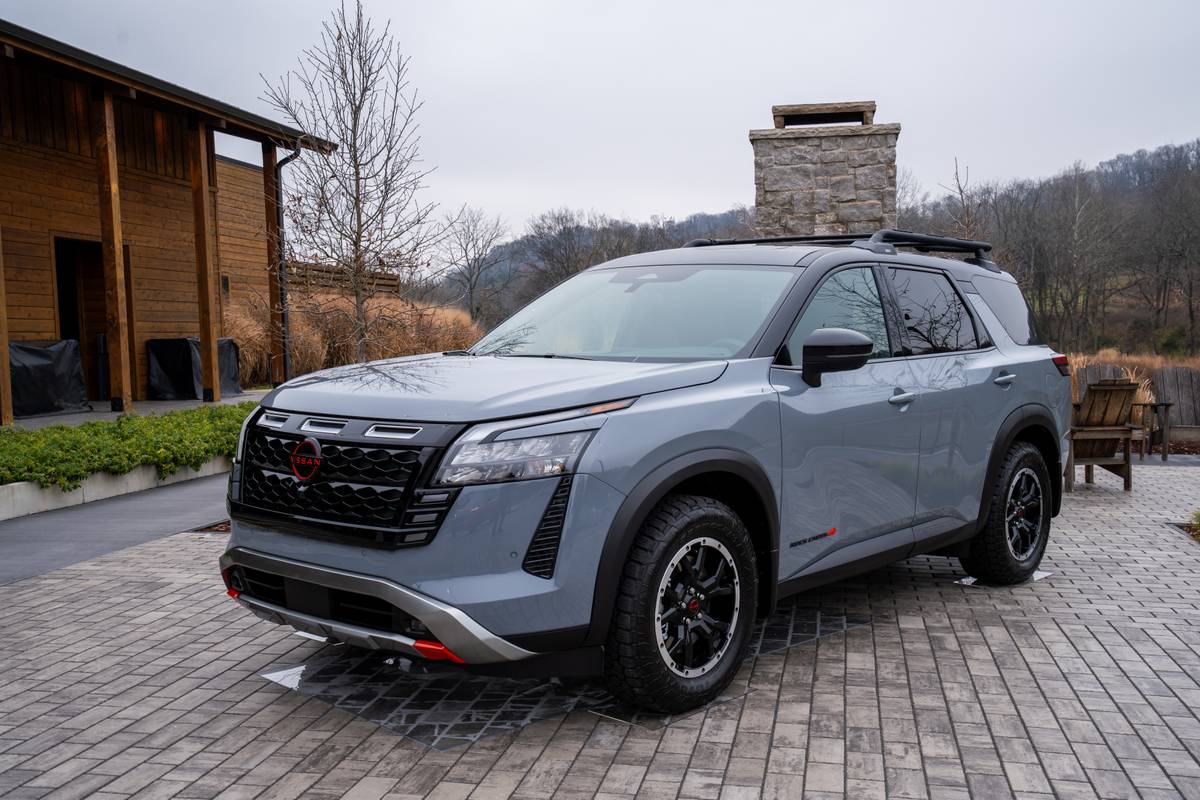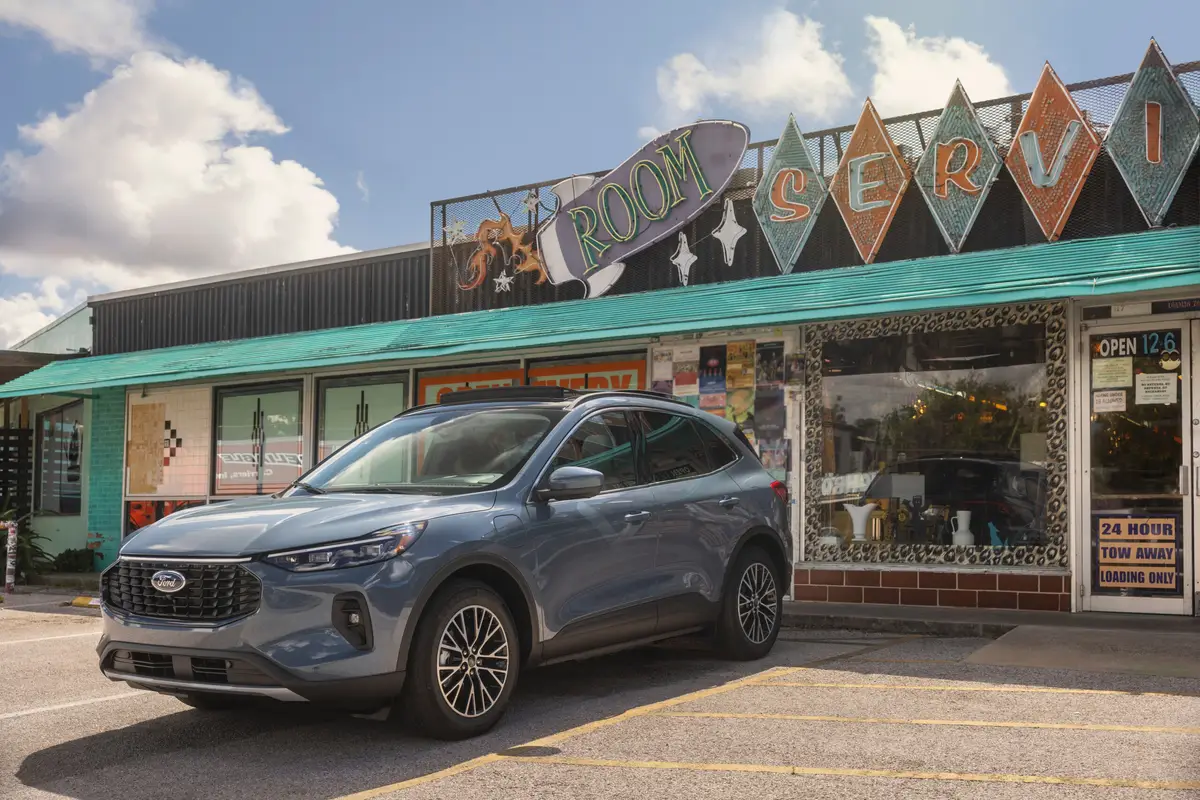The Morning Call and Mcall.com's view
One of the cleverest tricks many auto manufacturers are performing these days is to turn what is essentially a practical economy car into a small sporty/performance type of car. Usually the outwardly changes aren’t that extensive – air dams and spoiler are added, there is some bright logo, wheels are fancier and the tires bigger. But done right and it could look like an entirely new car.
The Mercury Lynx XR3 is one of those cars that was done up right. In fact, it almost looks like it was built from the ground up to be a sporty car. Sort of like a smaller version of Mercury’s sporty Capri, no doubt an influence on the Lynx. In addition to what can be seen, the XR3 also has a hopped up version of the Lynx four-cylinder engine that makes it a genuine economy/ performance car.
The Lynx is not as well-known as its Ford counterpart the Escort – the world’s best selling car – and this is simply because fewer buyers shop for an economy car in a Lincoln-Mercury store. But aside from some minor cosmetic and trim touches it is essentially the same car. Obviously, since the Escort is the world’s best selling car and the Lynx is the same thing, it has to have something going for it.
Although the Lynx looks like a typical youth market car it is not ignored by any age group, according to Lincoln-Mercury. Of all Lynx buyers, 34 percent are under 30, 40 percent are 30 to 49, and 26 percent are 50 or older. About half the buyers are women. I would say, though, that the Lynx XR3 will definitely appeal more to the younger driver. And why not? It is sporty looking, handles and performs better than the average economy car, gets good fuel mileage and is moderately priced.
The XR3 is distinguished from other Lynx models by its unique asymmetrical grille, aerodynamic front air dam with built-in fog lamps, wide wheel flares, rocker moldings, black lower body color, rear spoiler and 15-inch wheels with P195/60HR EagleGT tires. The overall effect is impressive. It will turn heads, especially young ones.
Basic dimensions include: a wheelbase of 94.2 inches; overall length of 166.8 inches; width of 65.9 inches; height of 53.3 inches and curb weight, 2,206 pounds. Although the Lynx does look very much like a subcompact it is actually a compact (a volume index of 100 to 110 cubic feet). EPA rates the volume index at 101 cubic feet, 85 passenger and 16 storage. Not a braggingly compact car but nevertheless a compact.
The two front seats should provide enough room for drivers and passengers of all sizes and shapes. There is actually some leg room for rear seat passengers, even with the front seats extended fully. The rear seats fold out of the way to provide a roomy 36 cubic feet of cargo space. All-in-all, the test car proved to be roomier than it looked.
The front-wheel drive XR3 features four-wheel independent suspension. The front uses MacPherson struts with strut-m ounted coil springs and stabilizer bar while the rear has trailing arms with modified MacPherson struts and coil springs. The rack-and-pinion steering goes lock-to-lock in three turns of the steering wheel giving the XR3 a 35.7 curb-to-curb turning diameter. The suspension is quite similar to the standard Lynx but the bigger wheels and tires give it an edge in handling.
Driving the XR3 is a snap. Handling is responsive and predictable and its relatively short wheelbase and overall length make it maneuverable and easy to park. The instruments are round gauges that are highly visible and easy to read. Controls are where you expect to find them and do not require any studying. The graphic warning display, however, is somewhat low and hidden from sight.
Also setting the XR3 apart from other Lynxes is its performance. And this was accomplished by that old American trick of souping-up the engine. The standard Lynx engine is a 1.9-liter/116-cubic-inch four-cyl nder that is rated at 86 horsepower at 4,800 rpm and 1 00 foot pounds of torque at 4,800 rpm. Not bad at all. The RX3 uses the High-Output version of this engine which features multi-port fuel-injection, tuned intake and exhaust manifolds, roller tappets, a performance camshaft and a lightweight flywheel. It is rated at 108 horsepower at 5,200 rpm and 114 foot pounds torque at 4,000 rpm.
Performance, as should be expected, is quite good. Acceleration is brisk and there is good passing power available. The test car was equipped with a five-speed manual transmission (standard, a three-speed automatic is optional) that also proved to be easy to operate. No fuss, no bother. Just get the clutch pedal at least halfway down and follow the numbers on the gear shift ball. Very forgiving. In fact, not a bad manual transmission to learn on.
The engine/transmission combination, in addition to its lively performance, also provided very decent fuel mileage. But, then, it is basically an economy car and that is expected. The test car averaged 22 miles per gallon for city driving and 30 miles per gallon for highway driving.
Base price for the XR3 is $8,212. Standard equipment includes a heavy duty battery, cloth sport seats, power steering, AM-FM stereo radio, leather- wrapped steering wheel, 15-inch aluminum wheels, fog lamps, remote control locking fuel filler door, remote control liftgate release, luxury sound insulation, instrumentation, electronic digital clock, dual electric outside mirrors and lower bodyside two-tone paint. Full price on the test car including a delivery and destination charge of $308 came to $9,870. Options included: comfort/convenience group, $117; climate control group (air conditioning, rear window defroster, tinted glass), $891; speed control, $176; upgraded radio, $148, and premium sound system, $138. Included in the price was $120 of added discounts and credits.
Latest news



